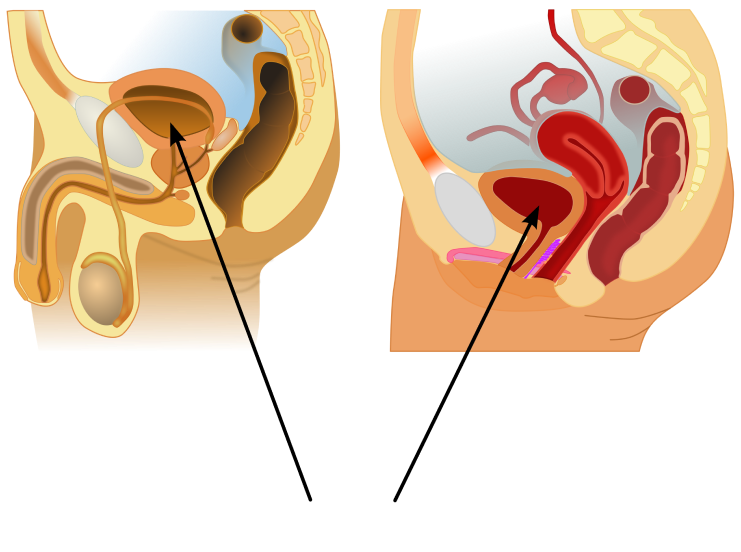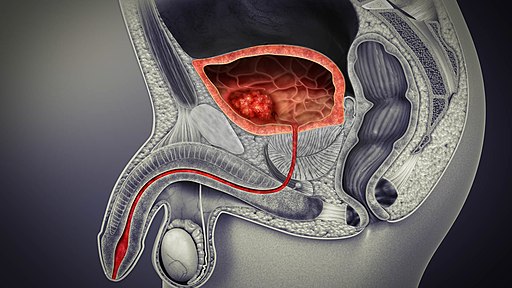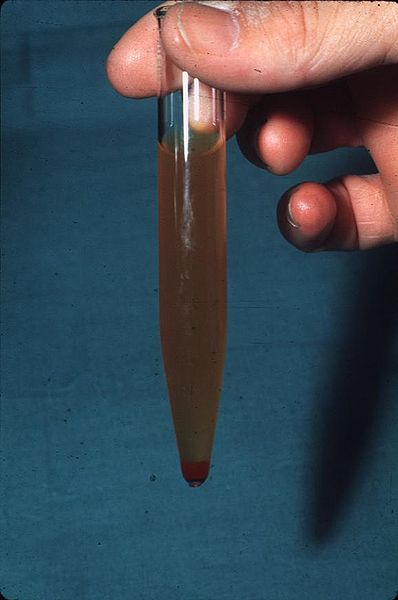A Patient's Guide to Understanding Symptoms, Risk Factors, Diagnosis, Staging, and Treatment Options of Bladder Cancer
By: Archiradhi Communications
The Case Study
A middle-aged individual began experiencing distressful symptoms such as blood in the urine, frequent urination, and discomfort while urinating.
Worried, the individual scheduled an appointment with a healthcare practitioner. After conducting a thorough examination and assessing the symptoms, the doctor refers the individual to a specialist for further evaluation.
The specialist conducts additional tests, including a cystoscopy and biopsies, and gives a diagnosis of bladder cancer, specifically urogenital carcinoma. This particular cancer originates in the lining of the urinary bladder that is responsible for storing urine.
What is bladder cancer?
Bladder cancer is among the most common types of cancer that affects many individuals globally. The most common type of bladder cancer is urothelial carcinoma (also called transitional cell carcinoma). Other bladder cancer types include squamous carcinoma and adenocarcinoma.
In certain parts of the world, such as Northern Africa and the Mediterranean region, squamous carcinoma is more common. This is due to the widespread prevalence of the parasitic infection 'schistosomiasis', which is a significant risk factor for bladder cancer.
.jpg)
Schistosoma (Blood Fluke)
However, urothelial carcinoma remains the most common form of bladder cancer in these regions as well.
Understanding the diagnosis and different types of bladder cancer becomes important for individuals facing this condition. It helps in making informed decisions about treatment options.
Doctors treat bladder cancer with surgery, medications (chemotherapy), radiation therapy, or a combination of these approaches. Healthcare teams work closely with patients to develop personalized treatment plans based on their specific situations.
Early detection and timely treatment improve the chances of successfully curing bladder cancer. To lower the risk of bladder cancer, remember to get regular check-ups. You should also be aware of symptoms like blood in urine or changes in urinary habits. Also, maintaining a healthy lifestyle is important.
Risk Factors for Bladder Cancer
Bladder cancer is more commonly diagnosed in males and older adults, with the average age of diagnosis being around 70 years. Several other factors can increase your risk of developing bladder cancer. They are:
-
Exposure to tobacco:
Tobacco is a major contributor to bladder cancer, accounting for over 50 percent of cases. This includes exposure to cigarettes, cigars, chewing tobacco, and even e-cigarettes (vaping). -
Chemical and environmental exposures:
The risk of bladder cancer increases with exposure to specific chemicals and industrial compounds. A well-known example is exposure to a type of dye called 'azo'.
Exposure to second-hand smoke also increases the risk of bladder cancer.
Bladder cancer can develop years or decades after the initial exposure.
Drinking water with high levels of arsenic or chlorinated trihalomethanes (a byproduct of water disinfection) is another risk.
Continuous exposure to certain pesticides or fertilizers also increases the risk of bladder cancer.
Similarly, residing in areas close to oil refineries is a major risk factor.
-
Family history:
A family history of bladder cancer, especially in individuals who also smoke, increases the risk of developing bladder cancer.
Remain vigilant and monitor your own bladder health if a close relative has or had bladder cancer.
Be proactive and avoid the use of tobacco and minimize exposure to harmful chemicals. Maintain a healthy lifestyle and mitigate the risks of bladder cancer.
Signs and Symptoms of Bladder Cancer
The initial signs and symptoms of bladder cancer often resemble those of a urinary tract infection, enlarged prostate, or kidney stones. However, it is important to be aware of the following common symptoms:
-
Hematuria (blood in the urine):
The most common indication of bladder cancer is blood in the urine. This can make the urine appear pink or red (visible hematuria).
Rarely, microscopic hematuria (blood cells are detectable only under a microscope) can be a sign of bladder cancer.
-
Pain:
Bladder cancer can cause pain in different parts of the body.
Pain may occur in the sides of the mid-back (the flank region). This occurs due to partial or complete blockage of the ureter (tube connecting kidney to bladder).
Pain can also occur in the area between the genitals and anus, or above the pubic bone. Another symptom is pain during urination (dysuria).
-
Voiding symptoms:
Various factors can cause an urgency or a frequent need to urinate.
These may include an overactive bladder, enlarged prostate, and urinary tract infections. In some cases, these symptoms may also indicate the presence of cancer of the bladder.
-
Other symptoms:
In the late stages of cancer of the bladder, additional symptoms may appear. These include fatigue, unexplained weight loss, and a loss of appetite.
If you experience any of the above-mentioned symptoms, it becomes important to consult a specialist. The specialist will conduct a thorough evaluation to pinpoint the underlying cause.
Diagnosis of Bladder Cancer
A complete evaluation of the urinary system becomes important for individuals with signs and symptoms of bladder cancer. This is particularly true for those over the age of 50.
-
Urine tests:
Doctors recommend specific tests such as urinalysis and urine cytology when there are symptoms of cancer.
Urinalysis uses a chemical dipstick. The dipstick changes color in the presence of specific substances in the urine, including white and red blood cells, and glucose.
In urine cytology, laboratory personnel examine a sample of urine under a microscope. They look for abnormal-appearing cells shed from the bladder lining.
-
Imaging tests:
Medical professionals use imaging tests like computed tomography (CT) scans, magnetic resonance imaging (MRI), and kidney ultrasounds.
These tests detect masses or flaws in the kidneys, ureters, bladder, or urethra. These tests help in identifying potential issues within these organs.
-
Cystoscopy:
A urologist performs cystoscopy to examine the urethra and bladder lining. The doctor will apply a numbing gel to the urethra to minimize discomfort. Then, they insert a small tube with an attached camera, a cystoscope, into the bladder via the urethra. The doctor carefully examines the bladder and urethral lining for the presence of any abnormal tissue.
If the doctor finds any abnormal tissue during the examination, they will perform a biopsy.
A biopsy is a procedure where the doctor removes a small sample of the tissue. Examination under a microscope will reveal if there are any cancer cells.
Staging and Grading of Bladder Cancer
Staging and grading have a crucial role in determining the appropriate treatment approach and prognosis for patients diagnosed with bladder cancer.
Doctors commonly use the TNM (Tumor, Node, and Metastasis) system for staging. It indicates the extent to which the cancer has spread within the bladder and to other organs of the body.
During grading, the specialist will observe the appearance of cancer cells under a microscope. This observation helps in predicting whether the cancer will recur or invade.
Experts recognize and contrast between low-grade and high-grade bladder cancers. Low-grade bladder cancers have a lower tendency to invade surrounding tissues and organs. They are less likely to recur after treatment.
On the other hand, high-grade bladder cancers have a higher chance of recurrence and invasion. These cancers exhibit more aggressive behavior and require closer monitoring and more intensive treatment strategies.
During the management of bladder cancer, experts consider risk grouping in addition to staging and grading. They determine different risk groups (low, intermediate, high-risk) based on factors like the size, appearance, and number of tumors.
These risk groups provide valuable information for guiding treatment decisions and predicting outcomes.
Treatment of Bladder Cancer
Treatment for bladder cancer depends on whether the cancer has invaded the muscle layer of the bladder (i.e. muscle-invasive bladder cancer) or not (non-muscle invasive bladder cancer).
Treatment includes surgery, medications (chemotherapy), radiation therapy, or a combination of these approaches.
The most common treatment approach for non-muscle invasive bladder cancer is transurethral resection of bladder tumor (TURBT).
TURBT involves the surgical removal of abnormal areas inside the bladder using a cystoscope.
Additionally, the healthcare team may recommend adjuvant (additional) therapy, depending on the risk of recurrence of the cancer. One such option for adjuvant therapy is to directly place drugs in the bladder using a catheter (intravesical chemotherapy).
The most common treatment option for muscle-invasive bladder cancer is radical cystectomy (removal of the bladder).
Conclusion
Cancer of the urinary bladder is a serious condition that requires prompt attention and appropriate treatment.
The case study of the middle-aged individual who experienced distressing symptoms highlights the need to seek timely medical help.
Individuals can reduce their risk of bladder cancer by taking proactive steps and attending regular check-ups. Also be aware of potential symptoms such as blood in the urine.
It is essential to adopt a healthy lifestyle and avoid the use of tobacco or exposure to harmful chemicals.
With early detection, timely treatment, and ongoing vigilance, you can vastly improve your chances of successfully treating bladder cancer.
Please Note
Archiradhi Communications provides this information as a helpful resource for our readers. However, this information is not medical advice.
If you have any specific health concerns or symptoms, we strongly recommend seeking the guidance of a healthcare practitioner. They are the best qualified to evaluate your situation and provide personalized advice.
Read Further Insights




